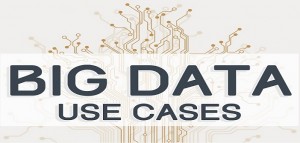
- Social sentiment analysis
- Customer interaction analysis
- Pattern matching
- Publicly available data analysis
- Web pages data analysis
- Clinical data analysis
- Financial data analysis
- Enterprise data analysis
Social Sentiment Analysis
As you are starting on Big Data practice and wanted to have quick and easy access to real Big Data, you could choose appropriate social networking sites to start with. The no-brainer websites to get started with are Facebook, Twitter, Pinterest, Google+ etc. Large number of users log on to these social networking sites and talk about different aspects of life, products & services. This data can be used to represent their behavior at a broader level. With this data, one can go about doing sentiment analysis of a group of users based on different classification achieve some of the following objectives:
- Targeted sales & marketing
- Track sentiments around political issues and forecast election-related outcomes
- Track sentiments representing need for new product/services
- Track health-related issues and help government, healthcare organizations plan appropriate steps
- Products/Services demand forecasting
Customer Interaction Analysis
One of the biggest concerns for all vendors, large or small, is to understand some of the following:
- Who are their most valuable customers?
- What products/services are valued most by majority of their customers?
- Waht promotions to run across which segment of customers to achieve maximum ROI?
If you are working in company or serving a company (your customers provided you are a service-based software company) related to any of the following business domains, you could get data easily from within:
- Retail (primarily eCommerce website): One of the key Big Data implementation in relation with retail business is 360 degree view of customers
- Telecommunication
All of the above and much more could be achieved by performing analysis on data gathered from customer interaction through different channels including website, mobile devices, Kiosks etc.
Pattern Matching
Companies such as banking and financial institutions use pattern matching technique to do fraud analysis and enhance their overall security capabilities. In this relation, pattern matching technique, simply speaking, includes performing analysis on end-user behavior across different channels to find out fradualent behavior and act appropriately. As per Wikipedia pattern matching page, pattern matching is the act of checking a given sequence of tokens for the presence of the constituents of some pattern. In case, you are part of a banking or financial organization, this could be easy place to get started.
Publicly Available Data Analysis
There are publicly available data sets that one could take on and get started with Big Data analysis. Take a look at this page which lists down different data sources for publicly available data sets.
Clinical Data Analysis
This is very trivial to understand. Take a use-case of finding out medicines that work for a specific disease such as cancer. There could be different medication that could be possible to cure a specific type of cancer based on symptoms shared by the patients. However, to find out a well-defined cure based on what worked in what scenarios based on clinical trials done in the past could prove to be very beneficial to end users in this type of life-threatening diseases. That was just one example. Based on clinical trials data, one could also forecast several aspects in relation with diseases. As a beginner in the area of Big Data, one could look out for users’ interaction including comments, ratings etc on different healthcare-related websites, and predict different aspects such as following:
- Most prevalent diseases in specific regions
- Most-talked about doctors
- Effective cures
- Disease pattern analysis
Web Pages Data Analysis
Look at search engines such as Google. One could really perform the Big Data analysis on data gathered from different pages, and create various reports such as trends etc. One could really find about some of the following:
- What products do the people from different regions are planning to buy?
- What are their likes and dislikes in particular field?
Other type of data that come from different web pages is analytics related data. For example, websites such as Google analytics do make use of Big Data technologies to capture data from different pages and perform an analytics on it to come up with different reports. Another example is ad platforms that make use of Big Data technologies to capture clicks on ad and do further processing.
Financial Data Analysis
One could log on different financial websites (news-related), gather data on ongoing basis and do some of the following:
- Market sentiments analysis
- Predict on trading front
- Trading pattern analysis
Enterprise Data Analysis
An enterprise (company) consists of different data sources such as following whose data could be used to perform Big data analysis and achieve some of the following objectives. Following are some of the different data sources that an enterprise can leverage:
- CRM or customer interactions with operation staff
- Email communication
- Customers interaction on their websites
- Log data in case it is a web based platform
With analysis on some of the above data types, an enterprise could achieve some of the following business objectives:
- New products/services
- Targeted sales & marketing
- Cost control
- Operational efficiency
- Fraud analysis primarily from Log data
- Coefficient of Variation in Regression Modelling: Example - November 9, 2025
- Chunking Strategies for RAG with Examples - November 2, 2025
- RAG Pipeline: 6 Steps for Creating Naive RAG App - November 1, 2025
I found it very helpful. However the differences are not too understandable for me